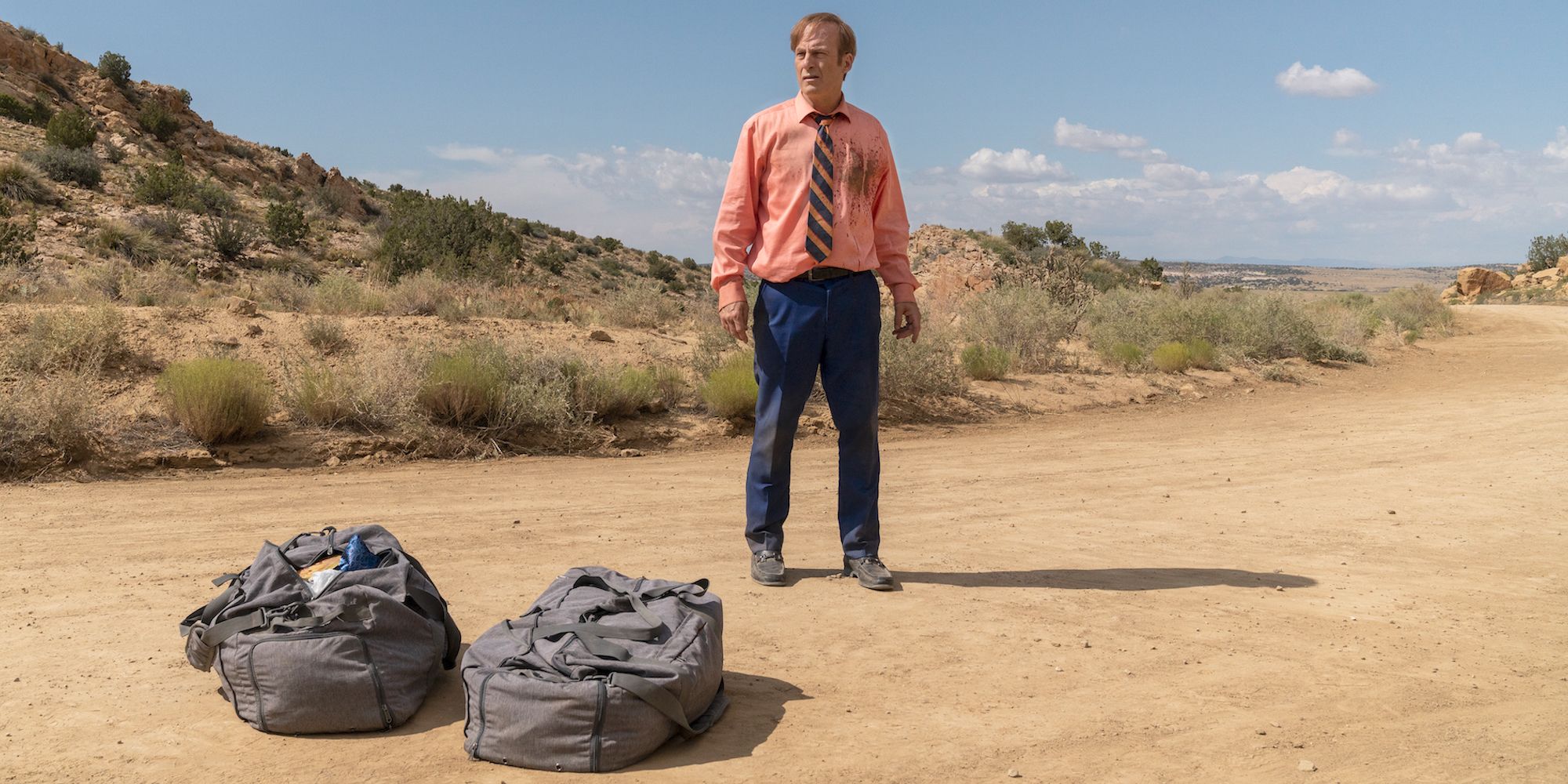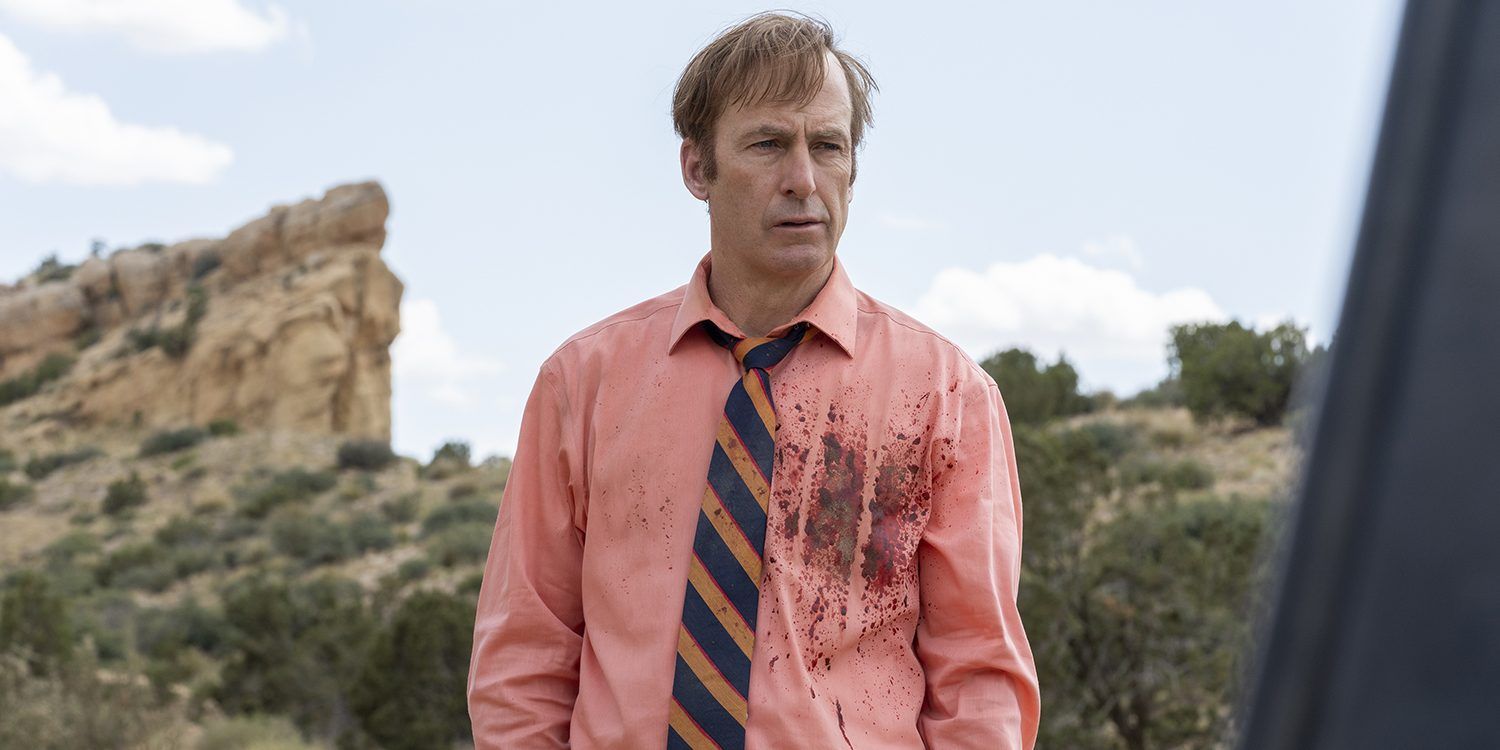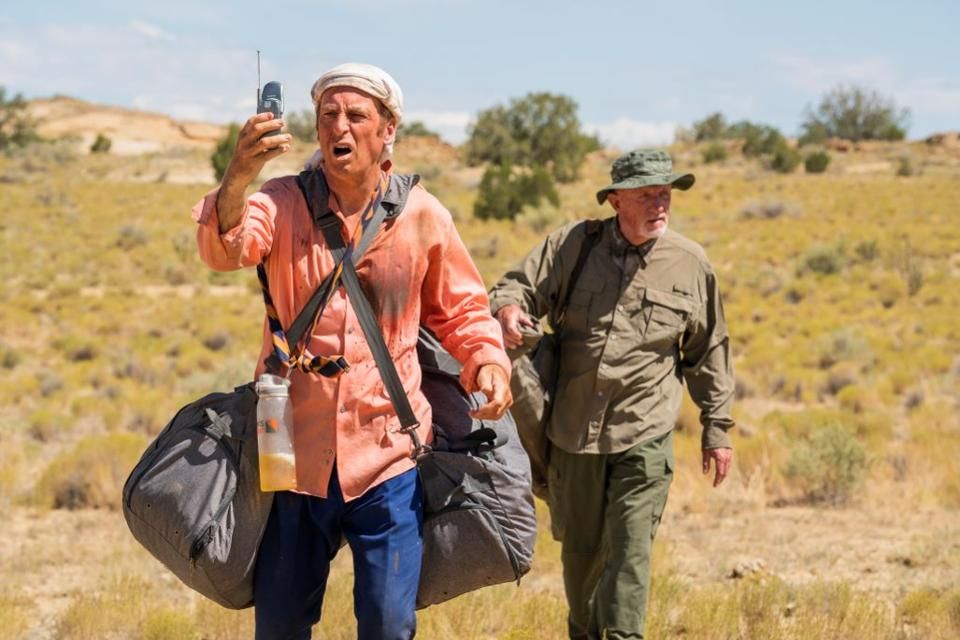The eighth episode of Better Call Saul may seem like any other at first — just another 45-minute-long continuation of Jimmy McGill’s (Bob Odenkirk) journey into criminal lawyer-hood. However, the episode, titled "Bagman," is arguably one of the most masterfully-written and directed sequences of the series, taking audiences along on a deep-dive exploration into the show's main characters as they are — quite literally — pushed to their very limits.
Taking place largely in the New Mexico desert, the episode has the clear mark of Vince Gilligan’s trademark directing, echoing the show’s predecessor Breaking Bad with the familiar cinematic landscapes of dusty terrain and sunny desert skies. "Bagman" starts off with a shot of two men cleaning away some dried blood spatter from the inside of a car, a nod to the classic Pulp Fiction scene with Jules and Vincent bickering while spray cleaning a bloody windshield. We see the two workers flicking blood on each other, setting the scene with Better Call Saul’s well-known dark comedy style, before switching to full-on dread with the entrance of the infamous, no-dialogue, perfectly in-unison Salamanca twins.
It is this appearance of the twins that sets the episode’s plot in motion, as they drop off a bag of $7 million to Jimmy in the desert, their actions eerily synchronized as they exit the car and set the bag down. Including these dread-inducing characters in this early scene seems to effectively create an immediate feeling of suspense, which only builds as the episode plays out, as well as acting as a foreshadowing moment to later story arcs in Breaking Bad. In fact, this looping-back effect to the show’s predecessor occurs several times throughout the next 40-or-so minutes, helping to make it stand out in later Better Call Saul seasons as a turning point and landmark episode.
As we see Jimmy, or rather now, Saul, left in the desert, taking the bag of money back to his car – where this money will form Lalo Salamanca’s bail — it’s clear that he’s a bit out of his element. Normally relying on henchmen to take over any less desirable tasks, Saul seems out of his depth in a potentially dangerous situation. With the commencement of the shootout scene, this fact is only reinforced, and Saul is left stranded in the desert with Mike (Jonathan Banks), the series’ stoic, no-nonsense character. The inclusion of Mike in this episode is integral to the plot of the series, but it also makes for an interesting character study of the two, as viewers once again are faced with watching a duo of men battling a fight for survival in the New Mexico desert (remind you of anything?).
Usually, we see Mike with a fed-up expression almost permanently glued to his face, yet in "Bagman," even he is pushed to his limit, having to think about why he took the path he did as the two fight to keep walking in the scorching desert heat. A contrast between the two begins to emerge as the characters discuss their motivations, where Mike seems to be urged by family obligations — a questionable position, to say the least, verging on a level of morality that is similar to Walter White’s. In comparison, Saul seems to be driven more by money and his own personal career ambitions. Mike’s moment of emotion here is unusual and offers a rare insight into this enigmatic character, setting the scene for his story arc in the rest of the series, and in Breaking Bad as well where Mike sets aside all his earnings for his granddaughter.
In contrast, throughout the New Mexico desert scenes, Saul becomes increasingly agitated in comedic ways until he gives in and drinks some of his own urine to stay alive. For Saul, "Bagman" is clearly a pivotal moment in more fully entwining him with the criminal underworld, evidently going to huge extents to become a "friend of the cartel." Saul has never pretended to be morally righteous but arguably seemed to be more on the fence about his association with the cartel until now, even shown in an earlier episode scene as hesitating before accepting this cash-delivery assignment — a glimpse into the continuing internal battle he faces with his own moral compass. "Bagman" cleverly appears to reiterate how and why Jimmy himself breaks bad – exploring the entirety of his arc from Jimmy the happy-go-lucky conman to Jimmy the elder-law specialist to Saul Goodman, a man with a questionable dress sense and a very skewed sense of morality, if any at all.
Another interesting scene from "Bagman" to consider is the night chat between Mike and Saul, in which Saul expresses to Mike that Kim (Rhea Seehorn) does in fact know about his involvement with the cartel, leaving Mike to comment that now Kim too is "in the game." Mike’s words ring true as Kim, for the first time, actively interacts with Saul’s world — a side of him she has so far drawn a firm divide with — as she visits Lalo in prison, worried about her husband. Mike’s comment is almost haunting at this point, a reminder of how Skyler White became increasingly drawn into Walter’s other life as soon as she learned about his criminal activities. In Breaking Bad, there is rarely a mention or allusion to Kim, adding a constant element of suspense around what happens to her in Better Call Saul. As a fan-favorite character, Kim finally venturing deeper into Saul’s world is a tremendous moment, especially as we have no idea where she will end up at the end of the series.
"Bagman" is undeniably one of the show’s most cleverly written episodes, answering for a lot of the plot’s continuation even while appearing to be just a bottle-type episode. Through Gilligan’s classic Breaking-Bad-esque portrayal of men being pushed to their physical limits, audiences are given the opportunity to see rare insights into the real men behind the criminals as they question their life choices and think about why they took the paths they did. In addition to this, the episode sets critical character dynamics in motion, from Kim’s involvement with Saul’s criminal activities to Saul’s increasing ties with the cartel — and all the while, audiences are offered almost an ode to Better Call Saul’s predecessor, the story that started everything off, through this episode's creative tone and scope.



